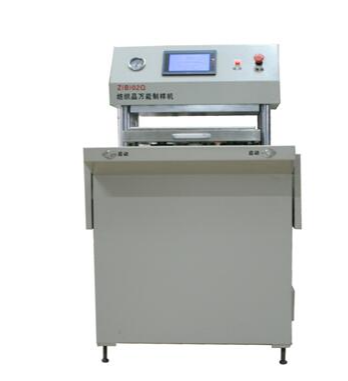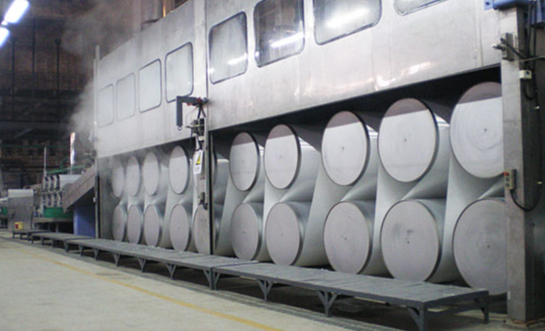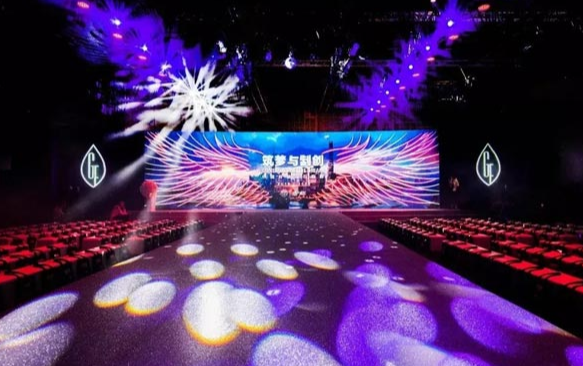Reduce the "carbon footprint", start from the textile source!
Fiber piece
All things are born by their own nature, and everything is achieved by its way. The current international situation is complicated and uncertainties in the world economy are increasing, but the global trend of green and low-carbon development is irreversible. As the call of "carbon peak, carbon neutrality" continues to heat up on a global scale, in the new development stage of China's textile power goal is basically realized, the textile and garment industry is accelerating the formation of a new economic form characterized by green, low-carbon and circular.
Ask the canal what is so clear? For water fresh comes from its source. As the source of the entire textile and garment industry, the field of fiber yarns is accelerating the exploration of green manufacturing systems with green materials, clean production, green certification, circular development, etc. as the core, and is committed to establishing a green and low-carbon development "vane" from the source, reducing the carbon footprint output to the downstream, playing a "leverage effect", and promoting the green transformation of the entire textile industry chain.
In the process of promoting "carbon peak, carbon neutrality", a large number of leading enterprises such as Fujian Yongrong Jinjiang, Dezhou Huayuan, Tangshan Sanyou and Qingdao Bonte have emerged in the field of fiber yarns. Some of these enterprises reduce energy consumption and improve production efficiency through intelligent manufacturing and photovoltaic power generation, some reduce pollution and empower great health through research and development and production of natural plant biodegradable, recycled fiber, stock liquid coloring fiber and other new technologies and new materials, and some participate in the "30·60 China Fashion brand climate Innovation Action carbon neutral Acceleration Plan". Join hands with downstream partners of the industrial chain to win a green future.

1 Green material
Reduce downstream carbon footprint output
Green development, materials first. From the textile source to reduce the burden of the earth, to explore a new path of sustainable development is the wise decision of the industry enterprises. In the context of "science and technology, fashion, green" has become the new positioning of the textile industry, many fiber yarn companies have begun to seek breakthroughs in the field of green new materials, from the beginning of the product life cycle, to bring more sustainable low-carbon textile material options for the industry.
As one of the leading enterprises in the field of recycled cellulose fiber, Tangshan Sanyou Group Xingda Chemical Fiber Co., Ltd. has always advocated green development, circular economy, and the formation of low-carbon and carbon-reducing green product structure system. For example, EcoTang®, an environmentally friendly viscose, can save 24L of water per kilogram and reduce carbon emissions by 2.89KG compared with viscose fibers that do not reach EUBAT technology; Recycled fiber ReVisco™, which recyles waste cotton textiles and wood pulp as raw materials; Tangsi ® color fiber, through the pre-spinning injection technology, the cellulose fiber and environmentally friendly pigment organic combination, reduce the later dyeing and finishing process, using 1 kg Tangsi ® color fiber can reduce water about 100L, reduce carbon emissions 4.23KG. In addition, Sanyou Chemical fiber has also developed bamboo carbon fiber, antibacterial fiber, far infrared fiber and other functional new material fibers.
In order to actively implement the "double carbon" goal, this year, Dezhou Huayuan Ecological Technology Co., Ltd. innovated the "new order 12 colors" for the color spinning plate, combined with the popular trend, presenting the colors associated with the solar terms every month, exporting traditional culture, and allowing customers to experience the pleasure brought by color renewal. "New sequence twelve colors" in the color matching mode and production mode, focusing on energy saving and consumption reduction, combined with the absolute advantages from the raw material end, the use of green environmental protection materials, such as recycled polyester, recycled cellulose fiber, degradable fiber, etc., for babies and children, underwear, can be achieved with plant dyeing, energy saving and emission reduction further deep and wide, in response to the double carbon goal and a big step forward.
At present, green textile materials have become a new trend in the development of the industry. As a cutting-edge functional fiber innovation enterprise in China, Qingdao Bonte Ecological Textile Technology Co., Ltd. was founded to uphold the concept of green environmental protection, the use of pure natural raw materials, with the power of plant innovation, to create Naturefi® plant force fiber platform. The company launched the ice mint fiber, warm ginger fiber, Tiancha fiber, isate root fiber and other plant fibers, intelligent temperature control series, heating series, cold touch series and other functional products, as well as plant extraction technology, microcapsule technology, biological regeneration technology, aerogels technology and other innovative breakthroughs, have a greater influence in the domestic and foreign markets.
When the "double carbon goal" has a time line, the sustainable development of the enterprise also has a clear direction. In the past year, in the face of the grim situation at home and abroad, many enterprises that adhere to the main line of green development have achieved remarkable results. In 2021, the sales volume of raw liquid colored fiber of Fujian Yongrong Jinjiang Co., Ltd. increased by more than 20%, the sales volume of recycled fiber increased by more than 300%, and the sales volume of functional fiber increased by more than 15%. In 2021, Dezhou Huayuan launched sustainable raw material products such as recycled glue, zero carbon fiber, and degradable fiber, and created green differentiated yarn brands such as plant dyeing wood language ™, carbon footprint can be measured CarbonStar™, and the company's yarn output and export foreign exchange reached a record high, and achieved a balance between production and sales...

2 Green production
Build environmentally friendly intelligent demonstration factories
In all links of the textile industry chain, clean and green production is not only the practical needs of enterprises to achieve energy conservation and emission reduction, but also the only way to fully implement scientific development and sustainable development. Many fiber yarn enterprises continue to promote clean production, energy saving and consumption reduction, starting from equipment, process, product, management and other links, improve the efficiency of resource utilization, and through digital empowerment, improve the degree of factory intelligence, and solidly promote the construction of green manufacturing system.
In June 2020, Yongrong Jinjiang's first renewable energy pilot, the 8 MW rooftop distributed photovoltaic power generation project, was successfully connected to the grid in Jinjiang plant. At present, the first phase of the project has been completed, which can provide renewable electricity of about 8 million KWH per year, equivalent to saving 2,520 tons of standard coal, reducing carbon dioxide emissions by 6,000 tons, and reducing sulfur dioxide emissions by 3.76 tons. Since the grid connection operation, the operating efficiency of the system is as high as 85%. The second phase of the 120,000 square meters of plant roof installation photovoltaic project is in preparation, is expected to be connected to the grid in August 2022, the annual power generation of 29.25 million KWH, equivalent to annual savings of 9213.8 tons of standard coal, reduce carbon dioxide emissions 21,900 tons, reduce sulfur dioxide emissions 13.72 tons.
In addition to energy saving and consumption reduction through photovoltaic power generation, Yongrong Jinjiang also makes efforts from many aspects such as equipment renewal, technological transformation, zero emission in warehousing and logistics, rainwater recycling, etc., and explores new paths of carbon emission reduction from the operation and consumption side, continues to promote the research and development and innovation of the "three yarns" of Jinkang yarn, Jinsheng yarn and Jinyi yarn, and advocates the implementation of green production and green lifestyle. To provide green products and high-quality services to the society. The company's recycled nylon fiber subverts the traditional source of fiber raw materials, collates and uses waste resources to produce new fibers that are almost the same as native fibers, and achieves the unity of green, low-carbon, recycling and high utilization.
In order to actively promote the implementation of "carbon peak, carbon neutrality", Dezhou Huayuan selected a sub-plant as a green demonstration plant, set a carbon reduction blueprint, took the lead in purchasing green electricity, and signed the SBTi scientific carbon target initiative. In addition, the intelligent high-performance fiber high-end customized production line project under construction in Dezhou Huayuan plans to build the only three-layer intelligent and digital "lighthouse" factory in the textile industry in the province, combining high-performance new materials, high-end equipment, information technology, Internet +, big data and other key development areas, and is committed to digital management, intelligent production, lean operation. To achieve energy saving and carbon reduction, clean production, and create a demonstration enterprise of differentiated yarn intelligent low-carbon manufacturing in China's textile industry.
For energy saving and consumption reduction, Sanyou chemical fiber has formed a complete system from water, electricity and steam. On the one hand, carry out the implementation of acid wastewater recycling and reuse, F2 water deep utilization, condensate recycling and reuse technology research, to achieve the recycling of water resources, greatly reduce water consumption; On the other hand, by studying the switching cycle of spinning machine, frequency conversion control of acid station centrifugal pump, popularization and application of air suspension centrifugal blower, the power consumption of enterprises can be reduced. Research and implementation of low-quality waste heat reuse technology, dryer efficiency improvement, efficient falling film evaporation process, etc., to promote the reduction of steam consumption in enterprises; At the same time, the organization has carried out research and development projects to shorten the yellowing cycle time, improve the efficiency of refining machines, and improve the production and efficiency of baling machines, so as to continuously improve the single-line production capacity and reduce the unit energy consumption.

In the process of promoting the "carbon peak, carbon neutral" action, it is inevitable to increase the operating costs of enterprises, but many enterprises through product research and development, energy saving, consumption reduction, improve production efficiency and other innovative measures, while resolving costs to promote the sustainable development of enterprises to a higher level.
3 Circulation system
Build an industrial chain green ecosystem
He who walks alone goes fast, and many walk far. Promoting the goal of "carbon peak, carbon neutrality" is not a certain link in the textile industry chain, a certain enterprise can achieve, the need for close cooperation between the upstream and downstream of the industry chain, and strive to achieve pollution-free green development of the whole process from raw materials to products, and establish a green cycle ecosystem from the source to the end of the industry chain.
As Li Yubin, executive vice president of Dezhou Huayuan, said, promoting carbon to peak carbon neutrality is not an investment behavior of an enterprise, and requires cooperation and participation of the entire supply chain. The company hopes to practice green textile with upstream and downstream partners to create a better home. To this end, in 2021, Dezhou Huayuan actively participates in the "Climate Innovation 2030 Action" commitment of China Textile Association and the "30·60 Accelerated Carbon Neutral Action of China Textile and Apparel", and jointly with the Accountability Office of China Textile Association, Ai, Lanjing and supply chain enterprises to carry out the carbon emission measurement of Modal clothing LCA, comprehensively measure the carbon emissions of each process, and display the carbon emissions at the consumer end. It has promoted Modal's carbon footprint products to the market and has played a good demonstration effect in the industry.
On the road of green and low-carbon development, Dezhou Huayuan is not alone, and more and more enterprises are making unremitting efforts towards the common goal. Shan Chuanlei, general manager of Qingdao Bonte, believes that to achieve carbon peak carbon neutrality, we must not only do a good job of "subtraction" of energy conservation and emission reduction, but also do a good job of "addition" of clean energy, and promote green low-carbon development with the concept of ecological circle and industrial chain thinking. Therefore, from product source to product output, Bonte fiber reduces resource waste through technological innovation and the use of renewable resources, uses new technologies and new combinations to shorten the production cycle, stabilize product quality, strengthen the collaboration of the industrial chain, and promote the green and sustainable development of the textile industry chain.
As one of the first enterprises to join the "30·60 China Textile and Garment Carbon Neutral Accelerated Action", Sanyou Chemical Fiber has completed the development of dual carbon goals: by 2030 to achieve carbon reduction of 30% per unit product, to achieve carbon neutrality by 2055; Released the company's first "Sustainable Development Report", and plans to prepare and publish the "Sustainable Development Report" on an annual basis, carry out the whole life cycle assessment of textiles, complete the life cycle assessment (LCA) of EcoTang® products, and disclose the EcoTang® carbon footprint information. Zhang Dongbin, deputy general manager of the company, said that in the future, the company will increase cooperation with domestic and foreign brands, gradually gather from two ends to the middle, promote the construction of a transparent, low-carbon and sustainable industrial chain, and lead the new trend of green consumption.

"The company strictly controls the import of raw materials, adheres to a responsible procurement policy, comprehensively audits the forest industry chain and pulp supply chain, improves the proportion of zero-carbon pulp and waste textile pulp, not only realizes the recycling of raw materials in the region, but also actively promotes the recycling of waste cotton textiles in the textile industry together with industry chain partners." At the same time, relying on the regional circular economy system of Sanyou Group, the closed-loop utilization of materials and multi-level utilization of energy are realized. For example, using the advantages of the Group's industrial network, NaOH produced by other subsidiaries is transported directly to the company through pipelines, thereby reducing the carbon emissions generated by transportation." Zhang Dongbin said.
From the top-level policy design to the landing planning and layout of industry enterprises, China's "double carbon era" has officially opened, giving the development of textile industry enterprises new connotation, new challenges and new opportunities. As a textile source, the field of fiber yarns has sounded the "vanguard" to promote comprehensive green transformation, more and more enterprises to practice the double carbon goal with practical actions, committed to join hands with industrial chain partners, around all links of the value chain to propose flexible solutions, jointly create a sustainable development of closed-loop economy, create a new era of low-carbon zero-carbon textile.
- EMERSON
- Honeywell
- CTI
- Rolls-Royce
- General Electric
- Woodward
- Yaskawa
- xYCOM
- Motorola
- Siemens
- Rockwell
- ABB
- B&R
- HIMA
- Construction site
- electricity
- Automobile market
- PLC
- DCS
- Motor drivers
- VSD
- Implications
- cement
- CO2
- CEM
- methane
- Artificial intelligence
- Titanic
- Solar energy
- Hydrogen fuel cell
- Hydrogen and fuel cells
- Hydrogen and oxygen fuel cells
- tyre
- Chemical fiber
- dynamo
- corpuscle
- Pulp and paper
- printing
- fossil
- FANUC
- Food and beverage
- Life science
- Sewage treatment
- Personal care
- electricity
- boats
- infrastructure
- Automobile industry
- metallurgy
- Nuclear power generation
- Geothermal power generation
- Water and wastewater
- Infrastructure construction
- Mine hazard
- steel
- papermaking
- Natural gas industry
- Infrastructure construction
- Power and energy
- Rubber and plastic
- Renewable energy
- pharmacy
- mining
- Plastic industry
- Schneider
- Kongsberg
- NI
- Wind energy
- International petroleum
- International new energy network
- gas
- WATLOW
- ProSoft
- SEW
- wind
- ADVANCED
- Reliance
- YOKOGAWA
- TRICONEX
- FOXBORO
- METSO
- MAN
- Advantest
- ADVANCED
- ALSTOM
- Control Wave
- AB
- AMAT
- STUDER
- KONGSBERG
- MOTOROLA
- DANAHER MOTION
- Bently
- Galil
- EATON
- MOLEX
- Triconex
- DEIF
- B&W
- ZYGO
- Aerotech
- DANFOSS
- KOLLMORGEN
- Beijer
- Endress+Hauser
- MOOG
- KB
- Moxa
- Rexroth
- YAMAHA
- Johnson
- Westinghouse
- WAGO
- TOSHIBA
- TEKTRONIX


Email:wang@kongjiangauto.com



































































































































